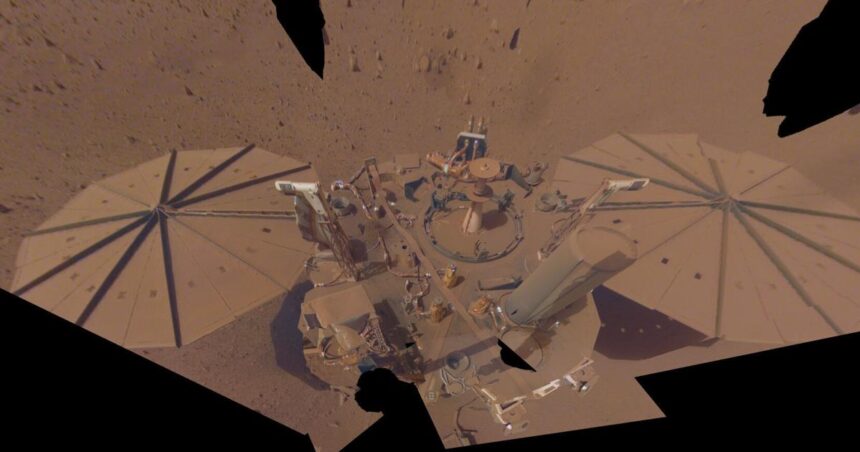CAPE CANAVERAL, Fla. — Mars may be drenched beneath its surface, with enough water hiding in the cracks of underground rocks to form a global ocean, new research suggests.
The findings released Monday are based on seismic measurements from NASA’s Mars InSight lander, which detected more than 1,300 marsquakes before shutting down two years ago.
This water — believed to be seven miles to 12 miles down in the Martian crust — most likely would have seeped from the surface billions of years ago when Mars harbored rivers, lakes and possibly oceans, according to the lead scientist, Vashan Wright of the University of California San Diego’s Scripps Institution of Oceanography.
The InSight Mars lander is seen in a selfie photo composite on April 24, 2022, the 1,211th Martian day, or sol, of the mission.
Just because water still may be sloshing around inside Mars does not mean it holds life, Wright said.
“Instead, our findings mean that there are environments that could possibly be habitable,” he said in an email.
People are also reading…
His team combined computer models with InSight readings including the quakes’ velocity in determining underground water was the most likely explanation. The results appeared Monday in the Proceedings of the National Academy of Sciences.
If InSight’s location at Elysium Planitia near Mars’ equator is representative of the rest of the red planet, the underground water would be enough to fill a global ocean a mile or so deep, Wright said.
It would take drills and other equipment to confirm the presence of water and seek out any potential signs of microbial life.

Though





